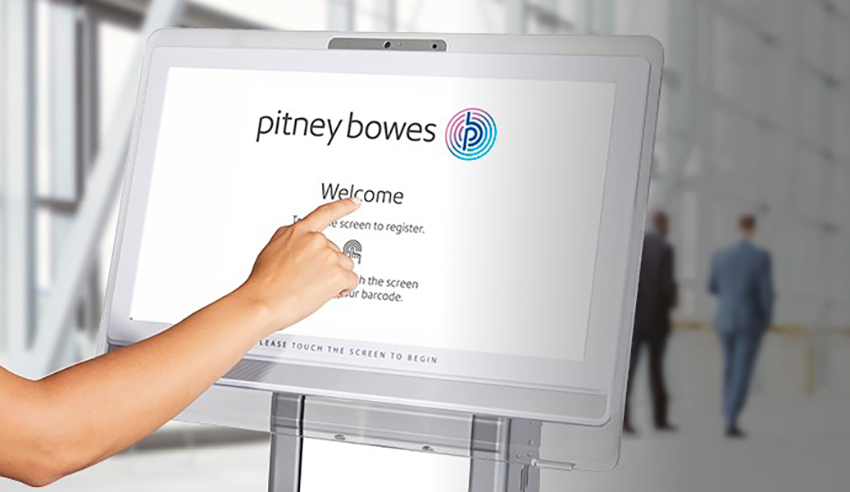Tracking law firm visitors: why firms should consider a digital visitor management system
Promoted by Pitney Bowes.
It’s important for law firms to know who is on their premises at all times. This helps manage the duty of care in case of emergency, and it helps manage the security risk that can be posed by unauthorised visitors.

Securely managing law firm visitors is an essential aspect of risk mitigation both in terms of physical safety and the amount of highly confidential and potentially sensitive information being worked within most law firms. It’s essential to know who is on the premises so sensitive information doesn’t disappear.
At first glance it can be hard to tell the difference between someone who is authorised to be on the firm’s premises, such as a lawyer, client, or other guest, and someone who shouldn’t be there at all.
Most firms have a visitor registration or check-in process that requires visitors to write down their names to gain access. However, that simply isn’t enough information in case of an emergency. It’s essential to capture meaningful information and to provide a form of identification to the visitor to prevent confusion.
Ideally, this should include a high-quality photograph of the visitor along with their name, contact details, purpose of their visit, and the name of the authorised staff member who will be responsible for them while they’re on the premises. In the past, collecting all of this information, especially photographs, has been too time-consuming and burdensome for law firm receptionists. Now, with the right visitor management system, this information can be gathered very quickly.
A digital visitor management system can both inform the firm that someone is on the premises as well as provide visitors with any safety or emergency information they may need while on the premises. The system should be able to print visitor badges, generate real-time reports, and capture emergency contact details to ensure all employees and visitors can be located immediately if an emergency arises.
Law firms need to use systems that make this process welcoming and streamlined to reduce the chances of people bypassing the system. The interface should be robust enough that it can’t be easily removed from the reception area, yet small enough that it can blend in. This lets reception areas be unattended, which frees up administrative staff to do more value-added work without compromising security or client service.
The system should offer intuitive touch screens that simplify check-in procedures and let the firm customise the printed badges. Furthermore, the system should let the firm retrieve the data from off-premises locations in case of an emergency. The system should also protect visitors’ privacy by only allowing data to be accessed by authorised employees.
The digital visitor management system should be augmented by a security-conscious culture at the firm where staff members are encouraged to be alert to visitors who may be unescorted. They should challenge visitors and check their credentials if necessary to help ensure there is no one in the office who shouldn’t be there.
Knowing who is on a law firm’s premises and being able to quickly identify why they’re there is critical. A digital visitor management system can relieve some of the burden faced by frontline staff and should feature critical components that combine to complement staff greeting procedures, maximise safety and security, and use the latest technology to help protect the firm.
LobbyTrac™ by Pitney Bowes can help streamline this process to boost your firm’s security.
To learn how the LobbyTac can help your law firm manage visitors with greater speed and security, call 13 23 63 or visit us online to schedule a demo today: pitneybowes.com/au/lobbytrac.html.
